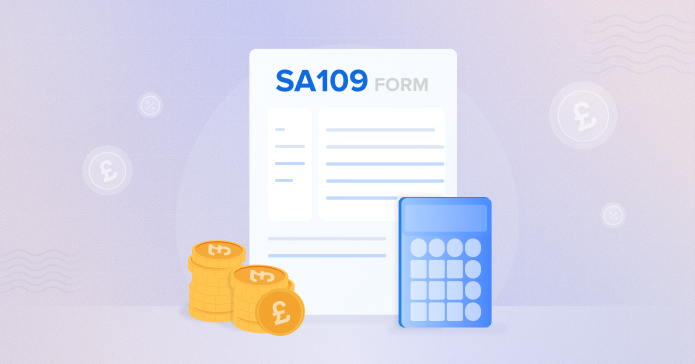What Is an SA109 Form?
If you’re a UK taxpayer living outside the country, navigating tax forms can feel tricky, especially when unfamiliar forms, like the SA109, come into play. But don’t worry; we’re here to simplify things.
The SA109 is a supplementary form accompanying the SA100 Self Assessment tax return. It helps individuals declare their residence and domicile status while detailing specific incomes and tax treatments applicable to non-UK residents.
From overseas landlords earning rental income or expatriates receiving pensions, to those claiming split-year treatment, the SA109 is essential for ensuring HMRC understands your tax position correctly.
Why Is Tax Filing Required for Non-UK Residents?
Even if you no longer reside in the UK, you may still have responsibilities when it comes to UK tax. This could be due to income from UK properties, pensions, investments, or work physically conducted within the UK.
This requirement relates to the taxation of individuals with non-resident or non-domiciled status under UK tax law. The UK government uses the SA109 form to calculate what contributions are owed based on your tax residency and domicile status.
What Is Non-Dom Status?
Under UK rules, non-domiciled (non-dom) status applies to individuals who live in the UK but consider a different country their permanent home (domicile). This status can significantly affect how their income and gains are taxed, especially if they elect to be taxed on the remittance basis. Essentially, only income brought into the UK is taxable.
For non-doms living outside the UK, understanding and declaring this status via SA109 helps establish how their income is taxed.
Who Needs to File an SA109 Form?
Not everyone needs to worry about filing an SA109. However, you typically need to file this form if you are:
- A non-UK resident earning income within the UK (e.g., rental income on properties). For residents, read here to find out more about the Landlord tax.
- Non domiciled in the UK, taking advantage of income tax reliefs such as the remittance basis. For income tax as a non-dom, take a look at our blog about SA106
- A dual resident, meaning your tax status qualifies you as a resident in both the UK and another country, often under a double taxation treaty agreement.
- Someone claiming split-year treatment, such as moving to or leaving the UK mid-tax year.
How Do You Inform HMRC About Leaving the UK?
If you’ve left the UK, letting HMRC know about your non-resident status is essential to avoid overpaying tax. There are two main ways to do this:
- Using the SA109 Form in conjunction with your SA100. The SA109 allows you to detail the dates of your departure, your chosen country of domicile, and the tax treatments you wish to apply.
- Alternatively, you can file a P85 Form to notify HMRC when leaving the UK permanently or for extended periods.
When Should You Claim Split-Year Treatment?
If you’ve left or returned to the UK during the tax year, you might qualify for split-year treatment. This treatment divides the tax year into two parts, ensuring you’re only taxed as a UK resident during the relevant period.
You’ll need to use the SA109 form to make this claim and provide specific dates of departure, arrival, and residency to qualify. Remember, not all cases qualify for split-year treatment, so it’s worth consulting HMRC guidelines or seeking professional tax advice.
Where Do You Send Your SA109 Form?
The SA109 form cannot be submitted directly to HMRC through their online filing system. Instead, you’ll need to:
- Use postal submission by sending your paper SA109 form, attached to the SA100, to HMRC directly.
- Leverage third-party tax software.
Ensure all your data is accurate, as discrepancies might lead to processing delays or potential penalties.
When Should You Use the SA109 Form?
There are specific instances where filing the SA109 is non-negotiable. You should use it if you’re:
- Declaring your residence or domicile status for tax efficiency.
- Earning UK-sourced income like rental profits, pensions, or business income.
- Claiming tax treaty relief under a double taxation agreement.
- Applying for the remittance basis to tax foreign income and gains brought into the UK.
- Requesting split-year treatment for long-term moves into or out of the UK.
If in doubt, it’s always better to err on the side of caution and file the form.
Simplifying Tax Filing with Debitam
Navigating non-resident tax and the SA109 form doesn’t have to be a complex process. At Debitam, we specialise in helping individuals like you streamline their tax filings, ensuring all forms are completed accurately and on time.
Here’s how we can help you:
- Expert Guidance: We simplify legal jargon and offer clear advice catered to your specific situation.
- Accurate Filing: Our experts help you complete your SA109 form with precise details, reducing the risk of errors and penalties.
- Time-Saving Solutions: Our services ensure you spend less time worrying about tax forms and more time enjoying your income, wherever you are.
Call us today to file your non-resident tax and leave the paperwork to us!













